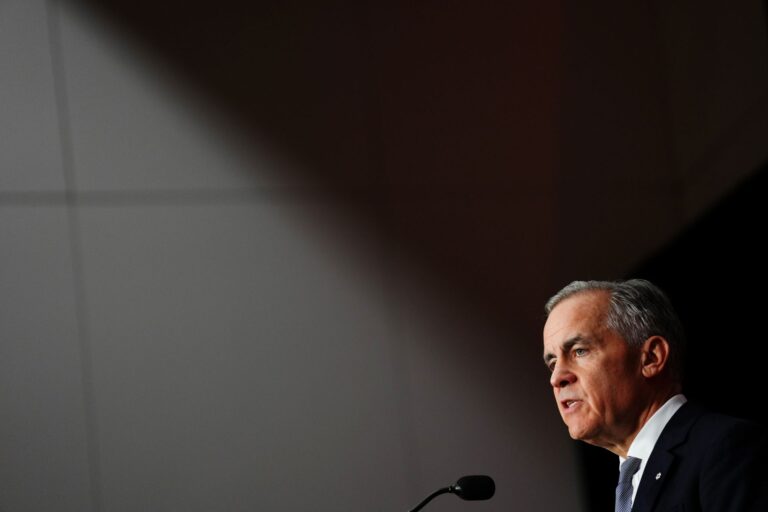(Version française disponible ici.)
Quebec’s recent high-profile losses with investments in the Northvolt battery plant and Lion Electric – combined with past mistakes such as the infamous Bricklin car plant in New Brunswick and the ill-fated hydroponic cucumbers project in Newfoundland – have sparked significant debate about industrial policy and government investment in the economy.
These examples of failure feed the persistent narrative of governments making costly, failed bets with public money. But there is a more interesting question that needs to be asked: How can we make inevitable government intervention more effective?
The truth is that all governments – even those advocating a laissez-faire approach – engage in some form of industrial policy, steering portions of the economy toward particular objectives.
Quebec’s recent experience could offer valuable lessons not only for other provinces but also for the federal government as it eyes ambitious interventions in defence production and procurement, housing, trade diversification and low-carbon energy.
A smarter approach to measuring results
For industrial policy to succeed, governments should establish robust evaluation frameworks that enable constructive, evidence-based reviews and debate about policy outcomes and impact.
That approach would allow governments to identify not just clear successes and failures but also trends and partial victories, including initiatives that delivered some benefits while perhaps falling short in other areas.
What would such an evaluation include?
First and foremost, we need to be clear about expected outcomes. We often focus on measuring inputs such as how much money was invested in a sector, how many subsidies were announced for a region or what economic spinoffs were reaped, such as tax revenue recouped from workers and businesses.
What matters more are outcomes – measurable changes in our economy that wouldn’t have materialized without government intervention. Are we genuinely boosting exports? Building strategic industrial capacity that fortifies supply chains? Creating sustainable competitive advantages?
These are the questions that should drive industrial policy. The answers would help us acknowledge the inevitable tradeoffs. For example, while that massive electric battery plant might create jobs and headlines, its immediate impact on carbon emissions might be negligible.
Learning from Australia’s evaluation model
Then, we should publicly outline the means undertaken to achieve these outcomes.
Australia offers a compelling model. Public entities there must answer key questions such as: What policy options are being considered – tax incentives, program spending, financing (equity, debt and insurance), regulations or initiatives such as targeted procurement? What is the likely net benefit of each option?
This transparent approach forces policymakers to justify their choices and enables citizens to understand the rationale behind industrial policy decisions.
Admittedly, measuring results can be challenging because outcomes such as export growth may fluctuate for many reasons. The subsidies, financing, tax incentives or other support provided may or may not have contributed to these changes. Sometimes everything is done right, but a shift in economic conditions derails the whole plan.
That’s precisely why a proper evaluation framework is needed – so we can better explain exactly where things went off track.
Building accountability into industrial policy
At a minimum, governments should make a public commitment to evaluate key aspects of their industrial policy regularly, such as every five to 10 years for the full program and a case-specific approach when warranted (such as for Northvolt).
It would be even better to enshrine the commitment to evaluation in legislation, as is the case in the laws establishing a few (but not all) federal Crown financial institutions, notably Export Development Canada, the Business Development Bank of Canada and the Canada Infrastructure Bank.
Who should do the evaluation?
It could be undertaken inside governments, comparable to the audits undertaken by the auditors general, or it could be done by an external expert. In either case, any evaluation should be conducted at arms-length from the entity responsible for management and delivery of the policy initiative, with the aim of avoiding conflict of interest or distortions.
Who should be able to access the evaluation?
Obviously, decision-makers within government should be the main target audience. But if confidence and trust in industrial policy are to be built among a wider audience, a high level of public transparency should be pursued. Ultimately, this would mean disclosure of the evaluation results and even public dialogue about the findings and implications.
Better evaluation for better decisions
What we’re proposing is a shift in posture because let’s be frank: no evaluation framework alone will make policies more effective. Political decisions remain inevitable, even with all the data in the world. But as researchers and citizens, we can ask for greater clarity from governments about outcomes.
Understanding what actually works helps us all make better choices about our economic future.












